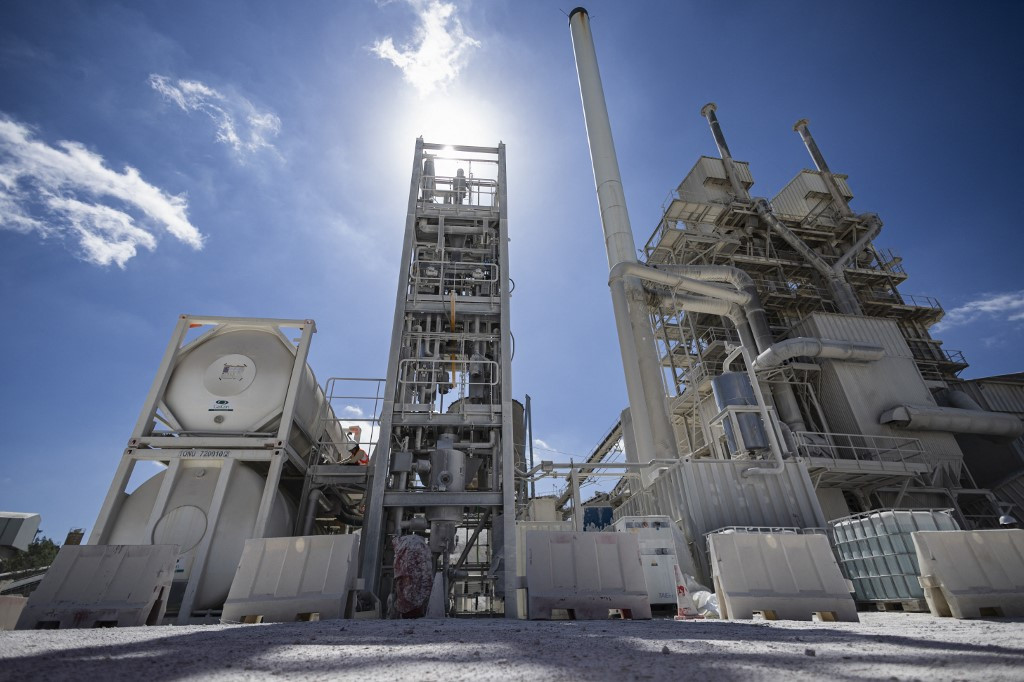Popular Reads
Top Results
Can't find what you're looking for?
View all search resultsPopular Reads
Top Results
Can't find what you're looking for?
View all search resultsCO2 in the atmosphere up by record amount in 2024: UN
Levels of the three main greenhouse gases -- the climate-warming CO2, methane and nitrous oxide -- all increased yet again in 2024, with each setting new record highs, the UN's weather and climate agency said.
Change text size
Gift Premium Articles
to Anyone
T
he increase in the amount of carbon dioxide in the atmosphere last year was the biggest ever recorded, the United Nations said Wednesday, calling for urgent action to slash emissions.
Levels of the three main greenhouse gases -- the climate-warming CO2, methane and nitrous oxide -- all increased yet again in 2024, with each setting new record highs, the UN's weather and climate agency said.
The World Meteorological Organization said the increase in CO2 levels in the atmosphere from 2023 to 2024 marked the biggest one-year jump since records began in 1957.
Continued fossil CO2 emissions, greater emissions from wildfires, and a troubling reduced absorption by land and sea all drove the increase, the WMO said.
Wednesday's update, which comes ahead of the November 10-21 COP30 UN climate summit in Belem, Brazil, focused exclusively on concentrations of greenhouse gases in the atmosphere.
A separate UN report, out next month, will detail shifts in emissions of the gases, but those numbers are also expected to rise, as they have every year with the world continuing to burn more oil, gas and coal.
This defies commitments made under the 2015 Paris Agreement to cap global warming at "well below" 2C above average levels measured between 1850 and 1900 -- and 1.5C if possible.
2024 was the warmest year ever recorded.
The WMO voiced "significant concern" that the land and oceans were becoming unable to soak up CO2, leaving the greenhouse gas in the atmosphere.
It warned that the planet could be witnessing a so-called "vicious cycle" of climate feedback -- whereby increasing greenhouse gas emissions fuel rising temperatures and trigger wildfires that release more CO2, while warmer oceans cannot absorb as much CO2 from the air.
WMO senior scientific officer Oksana Tarasova said feedback may eventually push natural systems to a tipping point -- for example, melting permafrost, leading to further emissions.
"Our actions should be towards the side of emission reduction as fast as possible if we don't want to see the domino effect," she told reporters.
Given CO2's role in driving climate change, "achieving net-zero anthropogenic CO2 emissions must be the focus of climate action", according to the report.
"The levels of the three most abundant long-lived greenhouse gases -- carbon dioxide, methane and nitrous oxide -- reached new records in 2024," the WMO said in its 21st annual Greenhouse Gas Bulletin.
In 2024, CO2 concentrations were at 424 parts per million (ppm), methane at 1,942 parts per billion, and nitrous oxide at 338 parts per billion.
That marks hikes of 152 percent, 266 percent and 125 percent respectively since pre-industrial levels before 1750.
Of the three major greenhouse gases, CO2 accounts for about 66 percent of the warming effect on the climate.
In 2004, the figure stood at 377 ppm.
The 3.5 ppm increase from 2023 to 2024 was "the largest one-year increase since modern measurements began in 1957", the WMO said.
Atmospheric methane is the second-largest contributor to climate change, accounting for around 16 percent of the warming effect.
Methane only remains in the atmosphere for about 10 years but has a much more powerful warming impact than CO2.
Humans cause some 60 percent of methane emissions, with agriculture and waste being major sources.
Nitrous oxide meanwhile accounts for around six percent of the warming effect, and human-induced emissions dominate through increased nitrogen additions to croplands.
As for growing climate skepticism, Tarasova said: "Climate change is not a religion. It's a science.
"What we are doing is making measurements, delivering the data."
Your Opinion Matters
Share your experiences, suggestions, and any issues you've encountered on The Jakarta Post. We're here to listen.
Thank you
Thank you for sharing your thoughts. We appreciate your feedback.











